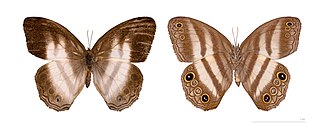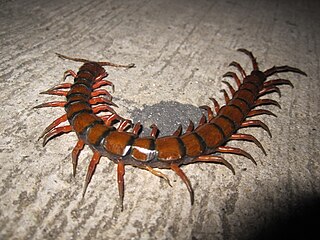 W
WAnanteris sabineae is a species of scorpions. It has a pale pigmentation of its pedipalps and legs, and a dark pigmentation of its carapace. It also has less yellow spots. It is closely related to Ananteris pydanieli.
 W
WA large number of arthropods are associated with sloths. These include biting and blood-sucking flies such as mosquitoes and sandflies, triatomine bugs, lice, ticks and mites. The sloth’s fur forms a micro-ecozone inhabited by green algae and hundreds of insects. Sloths have a highly specific community of commensal beetles, mites and moths.
 W
WChoeradodis stalii is a species of praying mantis with common names that include tropical shield mantis, hooded mantis, and leaf mantis. It is found in Brazil, Ecuador, French Guiana, Panama, and Peru.
 W
WCryptocellus becki is an arachnid species in the genus Cryptocellus. It can be found in the Amazon rainforest.
 W
WThe Eupnoi are a suborder of harvestmen, with more than 200 genera, and about 1,700 described species.
 W
WGuyanemorpha is a genus of beetles, the Guyane False-form beetles, in the family Carabidae. It contains one known species, the Spectacular Guyane False-form beetle,, which was found in French Guiana and first described in 2013 by Terry L. Erwin in the open access journal ZooKeys. It was discovered during a survey of the country's insects by the Entomological Society Antilles-Guyane (SEAG).
 W
WMastigoproctus is a genus of whip scorpions. Native to the tropical forest regions of northern South America, these whip scorpions can reach a length of up to 9 centimetres (3.5 in) and can weigh over 30 grams (1.1 oz). Despite popular belief, they are not venomous as, like all other whip scorpions, they do not possess venom glands.
 W
WOxysternon festivum is a species of dung-beetle of the scarab beetle family.
 W
WPareuptychia metaleuca, the one-banded satyr, is a species of butterfly of the family Nymphalidae. It is found from Mexico to Brazil.
 W
WScolopendra gigantea, also known as the Peruvian giant yellow-leg centipede or Amazonian giant centipede, is one of the largest centipedes of the genus Scolopendra with a length up to 30 centimetres (12 in). This species is found in various places in South America and the Caribbean, where it preys on a wide variety of animals, including other sizable arthropods, amphibians, mammals and reptiles.
 W
WThe skeleton tarantula, Ephebopus murinus, is a species of spider belonging to the family Theraphosidae (tarantulas), sub-family Aviculariinae. A New World species, it is native to several South American countries. Its common name is derived from the skeleton-like markings on its legs.
 W
WTatuidris, or armadillo ant, is a rare genus of ants consisting of a single species, Tatuidris tatusia. The ants are small in size and inhabit the leaf litter of Neotropical forests in Central and South America, from Mexico to Brazil. Workers are ferruginous-colored to dark red and present a distinctive morphology, consisting of a shield-like head with a broad vertex, ventrally-turned heavy mandibles which do not overlap at full closure, and unique among ants – an antenna socket apparatus sitting upside-down. Little is known about the biology of the ants, but they are likely nocturnal and specialist predators.
 W
WThe titan beetle is a Neotropical longhorn beetle, the sole species in the genus Titanus, and one of the largest known beetles.